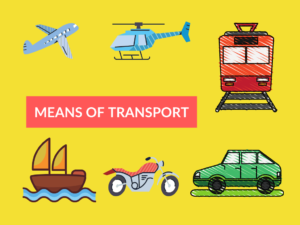What is the Difference Between Simplex, Half Duplex, and Full Duplex Transmission Modes?
Introduction
Transmitting signals between devices is an essential part of communication systems. Different transmission modes dictate how these signals are sent and received. The three primary transmission modes are simplex, half duplex, and full duplex. In this article, we will explore the differences between these modes, their applications, and examples, providing you with a comprehensive understanding of each.
What is Simplex?
Simplex is the most basic transmission mode, often referred to as one-way communication. In simplex mode, data is transmitted in only one direction, from a sender to a receiver. The receiver does not send any response or acknowledge the receipt of data. It is a unidirectional flow of information.
Examples of Simplex
Some common examples of the simplex transmission mode include radio and television broadcasting, where information is transmitted from a central source to numerous receivers. Another example is a doorbell, where pressing the button triggers a sound but does not require any response from the receiver.
Uses of Simplex
Simplex transmission is used in scenarios where one-way communication is sufficient and feedback or response is not required. It is cost-effective and efficient for broadcasting information to multiple recipients simultaneously.
What is Half Duplex?
Half duplex allows for communication in both directions, but not simultaneously. Devices in half duplex mode can either send or receive data at a given time, but not both. When one device is transmitting, the other device must listen and wait for its turn to transmit.
Examples of Half Duplex
Walkie-talkies are a classic example of half duplex communication. Only one person can talk at a time, and the other person must wait for their turn. In computer networks, Ethernet connections operate in half duplex mode, where devices take turns to transmit and receive data.
Uses of Half Duplex
Half duplex transmission is suitable when both parties need to communicate but not simultaneously. It is commonly used in situations such as two-way radios, intercom systems, and walkie-talkies.
What is Full Duplex?
Full duplex is the most advanced transmission mode, enabling simultaneous bidirectional communication. In this mode, devices can send and receive data at the same time, resulting in a more efficient and faster communication process.
Examples of Full Duplex
Modern telephones and mobile devices operate in full duplex mode, allowing users to engage in real-time conversations. Similarly, computer networks utilizing Ethernet switches can achieve full duplex communication by providing dedicated transmission paths for sending and receiving data simultaneously.
Uses of Full Duplex
Full duplex mode is essential in scenarios that require real-time two-way communication, such as phone calls, video conferencing, and online gaming. It significantly reduces delays and allows for smoother interactions.
Differences Table
| Difference Area | Simplex Transmission Mode | Full Duplex Transmission Mode |
|---|---|---|
| Direction | One-way communication | Simultaneous bidirectional communication |
| Transmission | Only sender can transmit | Both sender and receiver can transmit |
| Receiving | Receiver cannot send data | Receiver can simultaneously send and receive data |
| Efficiency | Lower efficiency as there is no immediate response or feedback | Higher efficiency as real-time feedback is possible |
| Examples | Radio broadcasting, doorbells | Telephone calls, video conferencing |
| Use Cases | One-way communication where feedback is not required | Real-time two-way communication, interactive sessions |
| Cost | Cost-effective due to simplicity | Higher cost due to advanced technology requirements |
| Complexity | Simple and easy to implement | Requires sophisticated hardware and software |
| Delay | Potential delays due to lack of immediate feedback | Minimal delays due to real-time feedback |
| Usage | TV and radio broadcasting, remote control systems | Telephone networks, computer networks |
Conclusion
In summary, simplex, half duplex, and full duplex transmission modes offer different levels of communication capabilities. Simplex is one-way communication without any feedback, while half duplex allows for bidirectional communication but not simultaneously. Full duplex provides simultaneous two-way communication, offering the highest efficiency and real-time interaction.
People Also Ask:
1. Can two devices communicate in both directions simultaneously in half duplex mode?
No, in half duplex mode, two devices can communicate in both directions, but not simultaneously. They must take turns to transmit and receive data.
2. Are there any advantages of using simplex transmission over other modes?
Simplex transmission is advantageous when one-way communication is sufficient and feedback or response is not required. It is cost-effective and suitable for broadcasting information to multiple recipients.
3. What are the key limitations of full duplex transmission?
One of the main limitations of full duplex transmission is the higher cost compared to simplex or half duplex. It requires more sophisticated hardware and software to enable simultaneous bidirectional communication.
4. Is full duplex mode commonly used in wireless communication?
Yes, full duplex mode is commonly used in wireless communication systems, especially for mobile devices such as smartphones. It allows users to engage in real-time two-way conversations.
5. Can half duplex mode be used for video conferencing?
While half duplex mode can theoretically be used for video conferencing, it would result in delayed and inefficient communication. Full duplex mode is preferred for real-time interactions like video conferencing to ensure smooth communication.


